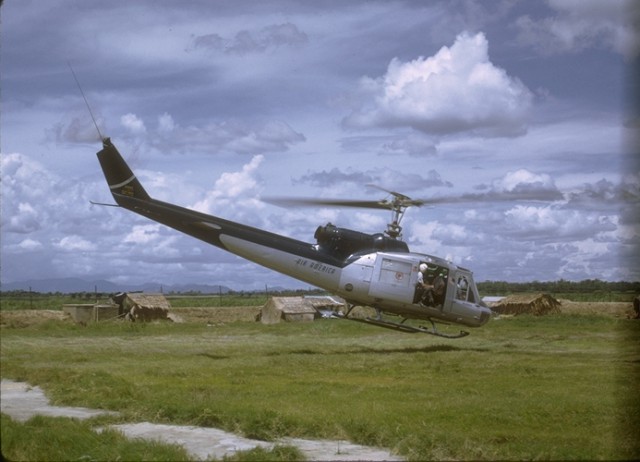The An-2 is used as a light utility transport, parachute drop aircraft, agricultural work and many other tasks suited to this large slow-flying biplane. Its slow flight and good short field performance make it suited for short, unimproved fields, and some specialized variants have also been built for cold weather and other extreme environments.
Known to the Americans as Site 85, the radar facility was perched atop a 5,800-foothigh mountain, Phou Pha Thi. Manned by US Air Force volunteers “sheepdipped” as employees of the Lockheed Aircraft Corporation, the site had been in operation only a few months.The mountain, used for many years as a staging base for CIA-directed Hmong guerilla fighters and American special operations and rescue helicopters, was only 125 nautical miles from Hanoi. Air America, a CIA-proprietary, provided aerial support for the facility, the technicians, and the security forces.

Coincidentally, Air America captain Ted Moore, flying a UH-1D Huey helicopter carrying ammunition to the site, saw the attack (“It looked like World War I,” he recalled.) and gave chase to a Colt as it turned back to the Vietnamese border. Moore positioned his helicopter above the biplane, as crewman Glenn Woods fired an AK-47 rifle down on it.

In the mists of the Annamite Mountains and part of a secret war, Air America employees Ted Moore and Glenn Woods gained the distinction of having shot down a fixed-wing aircraft from a helicopter, a singular aerial victory in the Vietnam War. Two months later, North Vietnamese commandos attacked and destroyed Site 85, inflicting the deadliest single ground loss of US Air Force personnel of the Vietnam War.
On 27 July 2007, CIA officially received An Air Combat First in an event attended by members of the Air America Board; pilot Ted Moore; Sawang Reed, the wife of flight mechanic Glenn Woods; CIA paramilitary legend Bill Lair; and the donors of the painting, former Air America officers Marius Burke and Boyd D. Mesecher.
Sources: 1, 2, 3Image source: Wikipedia, air-america.org

Chuyện Lê văn Tám!
ReplyDelete